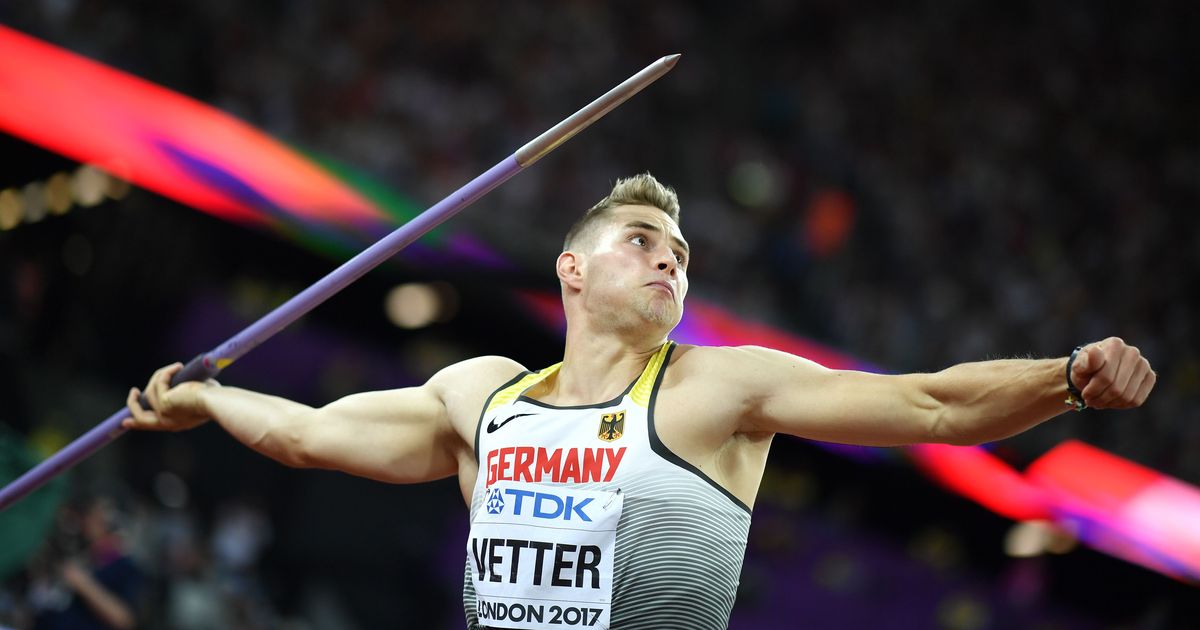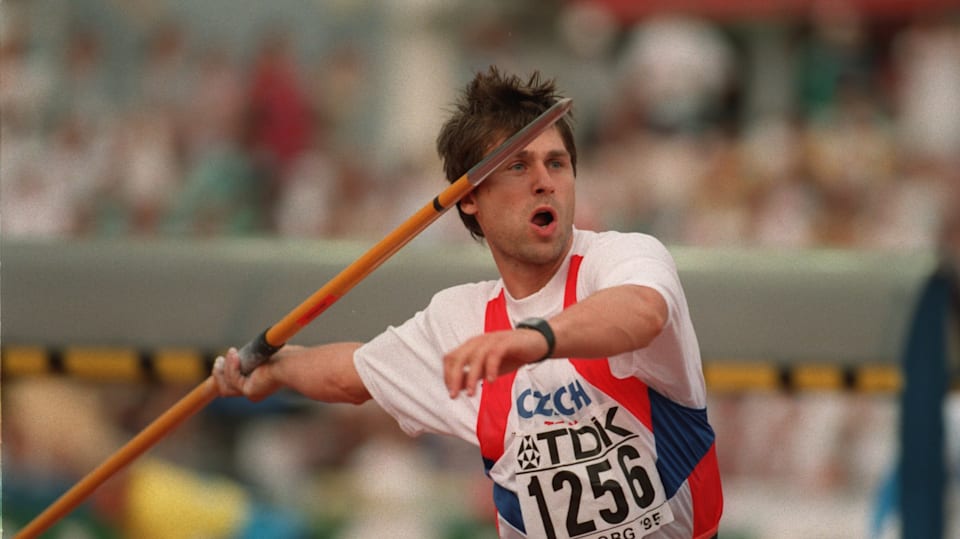Current Javelin World Record Holder and Throw
The current javelin world record is held by Jan Železný, a Czech athlete renowned for his exceptional throwing prowess. He set the record in 1996, a mark that has stood the test of time and continues to inspire generations of javelin throwers.
Jan Železný’s Biography and Training Regimen
Jan Železný was born in 1966 in Mladá Boleslav, Czechoslovakia. His athletic journey began with football, but he eventually discovered his passion for javelin throwing. His dedication and hard work paid off, and he quickly rose through the ranks of the sport, becoming a dominant force in the international javelin scene.
Železný’s training regimen was rigorous and focused on building strength, power, and precision. He incorporated a variety of exercises into his routine, including weightlifting, plyometrics, and speed drills. He also paid meticulous attention to his throwing technique, constantly refining his form to achieve maximum distance.
The Record-Breaking Throw
On May 25, 1996, at the IAAF Grand Prix meeting in Jena, Germany, Železný unleashed a historic throw that shattered the existing world record. The javelin soared through the air, landing at a distance of 98.48 meters (323 feet 1 inch). This extraordinary throw showcased Železný’s exceptional athleticism, technical mastery, and unwavering determination.
The conditions at the event were ideal for a record-breaking throw. The wind was favorable, and the track surface was in excellent condition. Železný’s technique was flawless, demonstrating his perfect balance, power, and precision. His throw was a testament to his years of dedicated training and unwavering commitment to the sport.
Comparison with Previous Records
Prior to Železný’s record-breaking throw, the world record was held by Uwe Hohn of East Germany, who threw 98.48 meters in 1984. Železný’s throw surpassed Hohn’s record by a mere 0.01 meters, highlighting the remarkable level of competition in the sport.
The factors that contributed to Železný’s record-breaking throw included his exceptional athleticism, technical mastery, and unwavering determination. His training regimen, which focused on building strength, power, and precision, played a crucial role in his success. The ideal conditions at the event also contributed to his remarkable achievement.
Factors Influencing Javelin World Record Performance

The javelin throw, a captivating display of athletic prowess and technical precision, is a complex event that demands a perfect blend of strength, speed, and technique. The pursuit of the javelin world record is an ongoing endeavor, pushing the boundaries of human athletic ability. Understanding the key factors that influence performance in this event is crucial to appreciating the remarkable achievements of elite javelin throwers.
Biomechanical Factors
Biomechanics plays a pivotal role in maximizing javelin throw distance. A successful throw requires a coordinated sequence of movements that transfer energy from the athlete’s body to the javelin, propelling it through the air. The key biomechanical factors include:
- Running Speed: A strong running approach provides momentum, translating into greater velocity at the point of release. Elite throwers utilize a powerful, yet controlled, run-up to generate maximum speed, which is essential for achieving long throws.
- Release Angle: The angle at which the javelin is released is crucial for optimizing trajectory. An optimal release angle, typically between 35 and 45 degrees, maximizes the distance the javelin travels through the air. The release angle is influenced by the athlete’s body position and the angle of the javelin at the moment of release.
- Body Position: A balanced and coordinated body position throughout the throw is essential for maintaining stability and maximizing energy transfer. The athlete’s body should rotate efficiently, generating power and propelling the javelin forward. Proper body positioning ensures that the athlete’s energy is directed towards the javelin, rather than being wasted through inefficient movements.
Equipment, Javelin world record
The design and specifications of the javelin itself significantly impact throw distance. The javelin’s weight, center of gravity, and aerodynamics all contribute to its flight characteristics.
- Javelin Design: Modern javelins are designed with a streamlined shape and a center of gravity that is positioned towards the rear of the javelin. This design allows for a more stable flight path and reduces air resistance, leading to greater throw distances. The javelin’s material composition also plays a role, with modern javelins typically made from lightweight yet strong materials such as aluminum or fiberglass.
- Javelin Weight: The weight of the javelin is a crucial factor in determining its flight characteristics. Heavier javelins require more force to throw, but they also have a greater momentum, which can result in longer throws. The standard weight for men’s javelins is 800 grams, while women’s javelins weigh 600 grams.
- Center of Gravity: The center of gravity of the javelin influences its balance and stability in flight. A javelin with a rearward center of gravity will tend to rotate more easily in flight, while a javelin with a forward center of gravity will be more stable. The optimal center of gravity for javelin throwing is typically positioned slightly behind the center of the javelin’s length.
Environmental Factors
Environmental factors can have a significant impact on javelin performance. These factors include:
- Wind Conditions: A tailwind can significantly increase throw distance, while a headwind can reduce it. The ideal wind condition for javelin throwing is a slight tailwind, which can help to propel the javelin forward and extend its flight path.
- Temperature: Temperature can affect the performance of the athlete and the javelin itself. High temperatures can lead to dehydration and fatigue, which can negatively impact throwing performance. Temperature also affects the air density, which can influence the javelin’s flight path.
- Altitude: Altitude can affect javelin performance due to the reduced air density at higher elevations. This reduced air density can lead to longer throws, as the javelin experiences less air resistance. However, the thinner air can also make it more difficult for the athlete to generate sufficient force to throw the javelin.
The javelin world record is a testament to human athletic prowess, a feat of strength and precision. It’s fascinating to see how athletes push the boundaries of what’s possible, much like the scrutiny surrounding the personal lives of celebrities, such as the rumors about who cheated on Hunter Schafer, who cheated on Hunter Schafer.
While these stories may be captivating, we must remember that athletes and celebrities deserve privacy, and focusing on their achievements and contributions is more important than gossip.
The javelin world record is a testament to human strength and athleticism, a feat achieved through years of dedication and rigorous training. The pursuit of excellence is a universal desire, as seen in the artistic impact of rosalia hunter schafer , who inspires through her creative expression.
Like the javelin soaring through the air, her work transcends boundaries, leaving a lasting impression on our hearts and minds.

